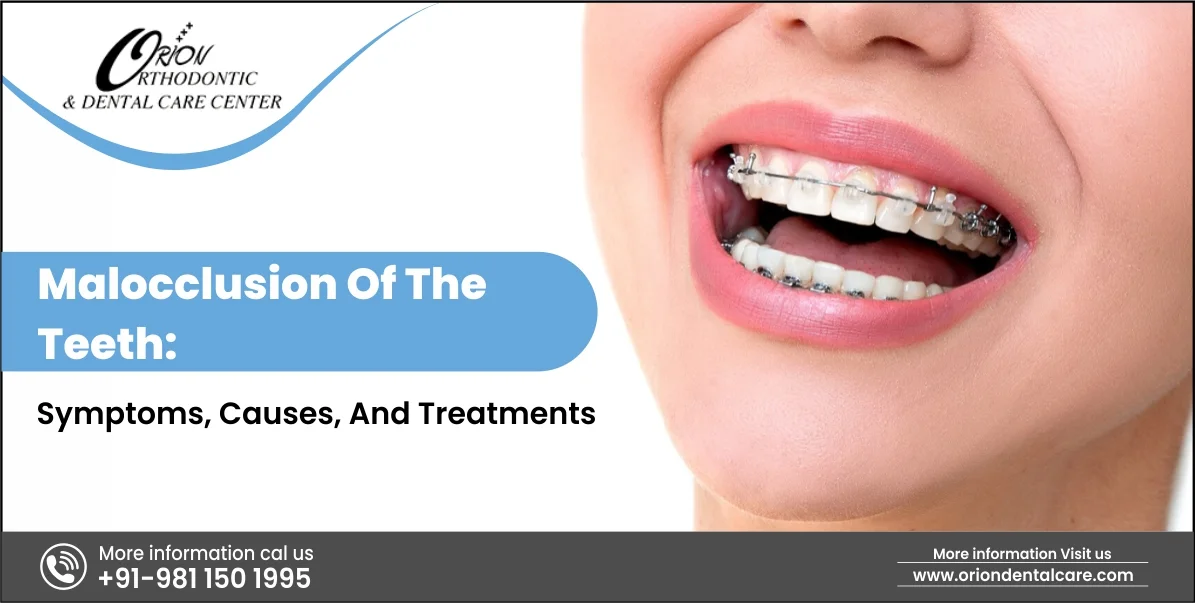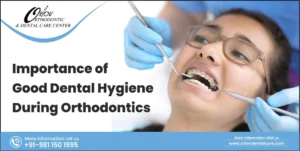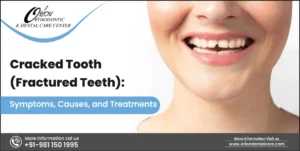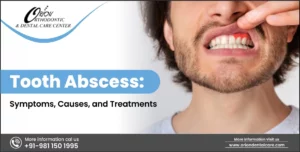The clinical word for misaligned teeth is malocclusion. It can result in overbite, underbite, crossbite, and overcrowding. It becomes challenging to carry out essential oral functions like speaking, biting, and chewing when teeth are misaligned, but an orthodontist is specially trained to treat all kinds of malocclusions and can successfully realign your teeth in the jaw. In order to realign a misaligned jaw and crooked teeth, orthodontic treatment uses a range of instruments and methods.
In this blog, we will delve into what malocclusion is, what causes it, how it is identified, and ways to treat it!
Understanding Malocclusion Of The Teeth
The term “malocclusion” describes the misalignment or improper relation between the teeth in the two dental arches. Even though it’s frequently dismissed as a cosmetic problem, there may be deeper consequences.
For example, when teeth crowd excessively because of malocclusion, cleaning becomes more difficult, increasing the risk of gum disease and tooth decay. Teeth that are not positioned correctly during chewing can also lead to uneven wear and possible issues with the jaw joints, such as temporomandibular joint disorder (TMJ). In addition to impairing speech clarity, severe malocclusion can make it difficult to pronounce some sounds correctly.
Every form of malocclusion poses a different set of difficulties, such as overbite, underbite, open bite, and crossbite. An underbite or overbite can affect how well a person chews and over time can cause issues with the jaw joint. Biting into food can be difficult and speech can be affected by an open bite. In addition to affecting alignment, crossbite can cause uneven surface wear on teeth.
In order to gradually realign teeth, orthodontic treatment for malocclusion may involve braces or clear aligners. Oral surgery might be necessary in more extreme situations to address the underlying structural problems.
Although malocclusion is often thought of as a cosmetic issue, its effects on oral health and function make it crucial to treat it properly.
Signs and Symptoms Malocclusion Of The Teeth
The term “malocclusion” describes the misalignment or improper relationship between the teeth in the two dental arches. The following symptoms are more detailed:
Appearance of Teeth: Here’s how malocclusion can affect the appearance of the teeth:
- In an overbite, the upper teeth erupt above the lower ones.
- Underbite: The upper teeth are pushed back by the lower teeth.
- Biting or Chewing Difficulties or Uncomfort:
Due to their teeth’s misalignment, people with malocclusion may feel pain or discomfort when they bite down on food.
Speech Difficulties
Because malocclusion causes the tongue to become misaligned during speech, it can lead to speech difficulties such as lisping, despite being rare.
Mouth Breathing
Malocclusion can occasionally result in habitual mouth breathing, in which the person breathes through their lips without shutting them naturally. Problems with the jaw or teeth’s alignment may be the cause of this.
Unable to Bite Into Food Properly (Open Bite)
An open bite happens even when the mouth is closed, a space separating the upper and lower front teeth. This may make it challenging for the person to bite into food, which could cause eating difficulties.
Depending on the degree of malocclusion, these symptoms can vary in intensity and may need to be corrected with orthodontic intervention.
Causes of Malocclusion Of The Teeth
There are various reasons why malocclusion may occur. Some possible causes of Malocclusion of the teeth include:
- Teeth Size Difference: An imbalance between the size of teeth and the capacity of the jaw can cause crowding and have an impact on the alignment of the lower and upper jaws.
- Loss of teeth: When a tooth is lost, the remaining teeth may move and become misaligned as they try to fill in the space left by the missing tooth.
- Behaviours in Early Life or Toddlerhood: Malocclusion can result from habits like thumb-sucking all the time during infancy or toddlerhood, which can affect the positioning of the teeth and jaw.
- Genetic Conditions: Malocclusion can be exacerbated by genetic conditions affecting the jaw that cause teeth to be misaligned.
These various elements emphasise how complex the causes of malocclusion are and how crucial it is to treat it with the right dental care and intervention.
Treatment Options for Malocclusion Of The Teeth
To achieve optimal dental alignment and function, each malocclusion treatment option targets a particular aspect of misalignment:
- Putting in Braces: Braces are orthodontic devices that are affixed to the teeth and comprise brackets, wires, and bands. By applying steady, mild pressure, they gradually shift the teeth into their proper positions. This procedure allows for permanent tooth repositioning by reshaping the bone in the tooth socket in addition to aligning the visible portion of the teeth.
- Tooth Aligners: Also called clear aligners, tooth aligners are made of transparent plastic trays that are fabricated to precisely fit over the teeth. With the help of these aligners, you can gradually move certain teeth into alignment over time by applying controlled pressure. They are well-liked by people who want orthodontic treatment without having to wear noticeable metal braces because they provide a discrete and removable alternative to traditional braces.
- Teeth extraction: One or more teeth may need to be extracted if there is extreme crowding and the jaw cannot properly accommodate all of the teeth. Teeth extractions improve overall dental health and function by giving the remaining teeth more room to erupt into proper alignment.
- Jaw Surgery: Surgical intervention may be necessary for individuals whose severe malocclusion is caused by untreated jaw fractures or genetic conditions. Orthognathic surgery, sometimes referred to as corrective jaw surgery, is a surgical procedure used to realign problems with the upper, lower, or both jaws. In order to ensure that the teeth and jaws are properly aligned and function, this surgical procedure attempts to address underlying structural issues in the jaw.
For the best results and enhancing general oral health and function, each of these treatment options can be used alone or in combination, depending on the unique needs of the patient.
Preventing Malocclusion Of The Teeth
Because malocclusion is mostly inherited, preventing the condition can be challenging.
However, in certain cases, the condition can be prevented. Limiting the use of pacifiers and bottles for young children can help prevent changes in the development of the jaw. Additionally, it’s important to encourage kids to quit sucking their thumbs as soon as possible. Detecting malocclusion of the teeth early can help prevent it.




